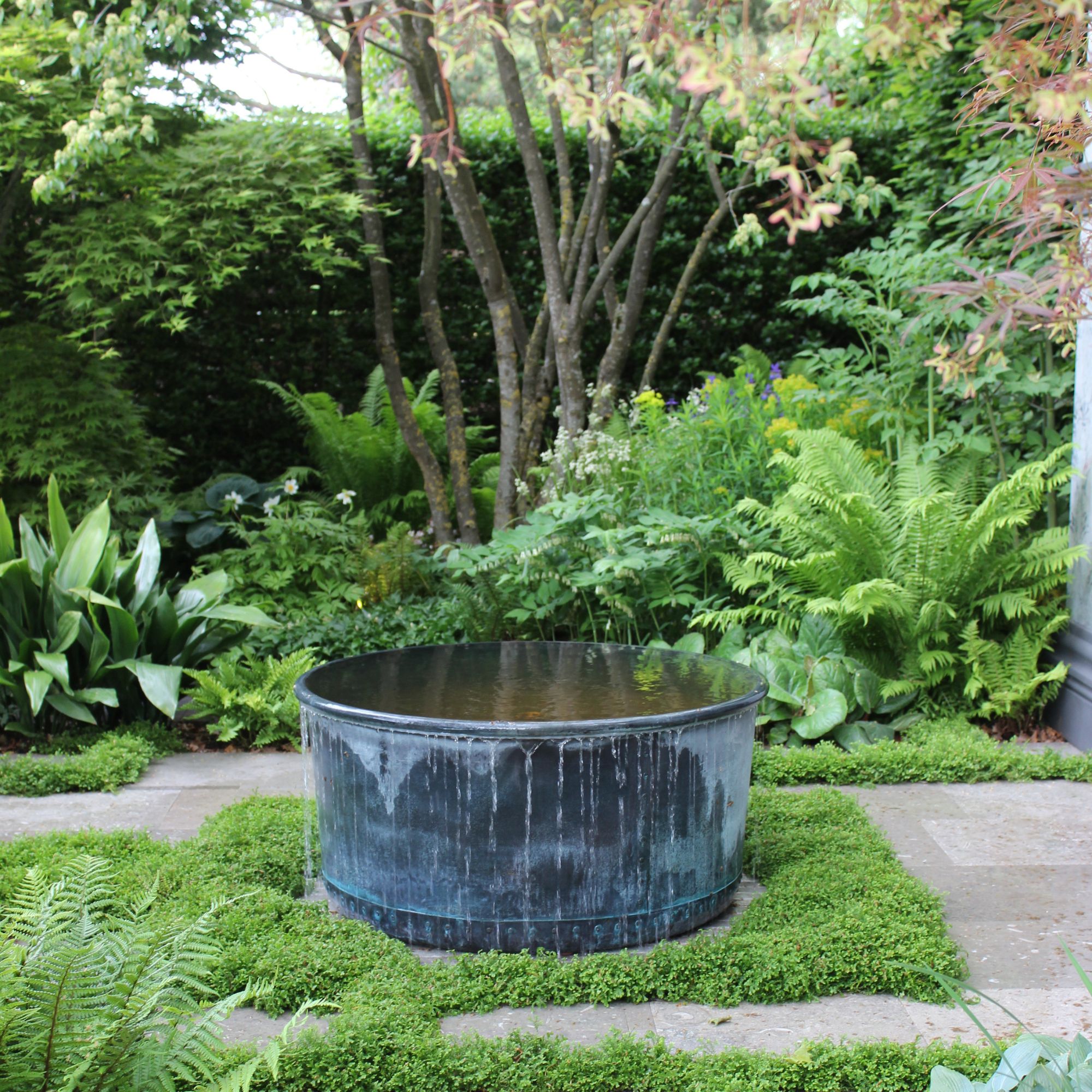
If you are researching how to make your own water feature, you must be craving tranquillity and harmony for your garden.
There are so many benefits to adding a water feature to your outdoor space. These include improved air quality, attracting wildlife, noise-pollution reduction and overall relaxation.
Water feature ideas come in all designs and sizes, but considering how to make your own water feature will offer a sense of self-satisfaction that is priceless whilst persevering your pennies.
How to make your own garden water feature
Not many of us are lucky enough to have a stream or pond in our garden but even the smallest outdoor space can benefit from a range of moods created by water. From the tranquil calm of a still pool to the invigorating splash of a cascading fountain, there is no end to the splendour created by a water feature focal point.
'Incorporating a water feature in your garden not only creates a tranquil and soothing environment, but it also helps to attract wildlife and enhance the overall ecosystem of your backyard' says Chris Bonnett, founder of Gardening Express.
If you want to know how to make your own garden water feature, we've asked the experts what to consider when planning garden landscaping ideas. From wild-life ponds, pebble fountains to flowing waterfalls, here's what you need to know.
1. Design and plan
The type of garden you have will determine what kind of water feature to choose. Consider the size of your garden and choose a design that won't overwhelm your outdoor space but in the same regard not be so small it gets lost.
Modern gardens will benefit from an eye-catching sculptural focal point that is elevated for maximum impact. Whereas cottage garden ideas are more suited to a shallow pond filled with lily pads or a natural-looking waterfall inspired by woodland brooks.
'Consider the size of your garden and choose a water feature that complements it. Options range from small fountains to large ponds. Match the style to your overall aesthetic,' agrees Chris Bonnett.
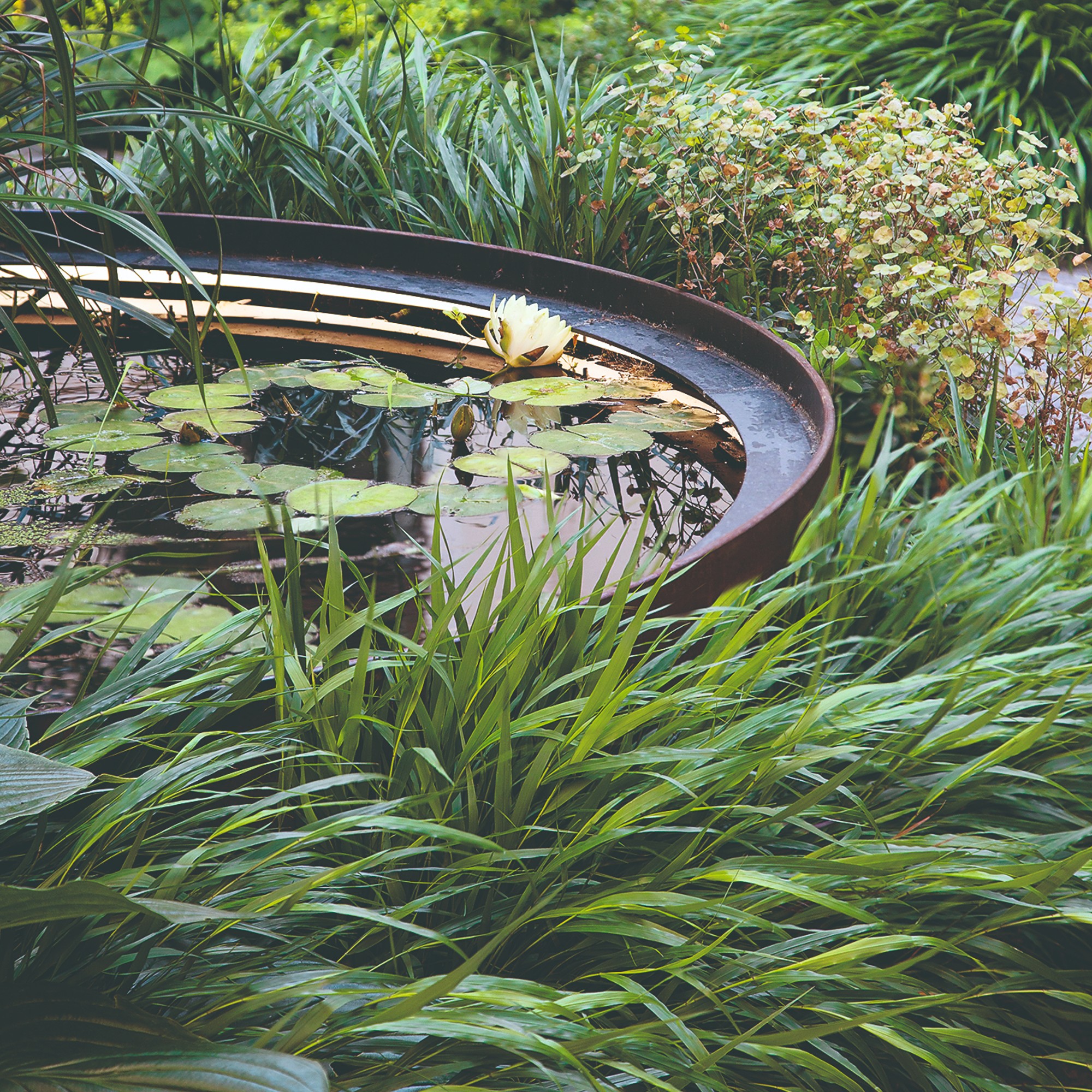
2. Choose the right plot
As well as style, water-feature positioning is key to making the focal point a success. Assess your garden layout and look for a position that receives sunlight at some point during the day, this will keep the water warm yet shady enough to discourage algae from forming when still. Plan to set the water element away from overhanging trees or shrubs that could drop debris into the water feature.
Consider wind direction and passers-by, especially if the water shoots up in a fountain. You don't want to risk soaking guests or family members with the wind blows.
'Once you’ve decided on the type of water feature you want, think about where you want to place it in your garden,' explains Samantha Richards, garden gazebo expert at Gazeboshop.
'It’s important to choose a spot that gets enough sunlight and is away from any trees or other plants that might drop leaves or branches into the water.'
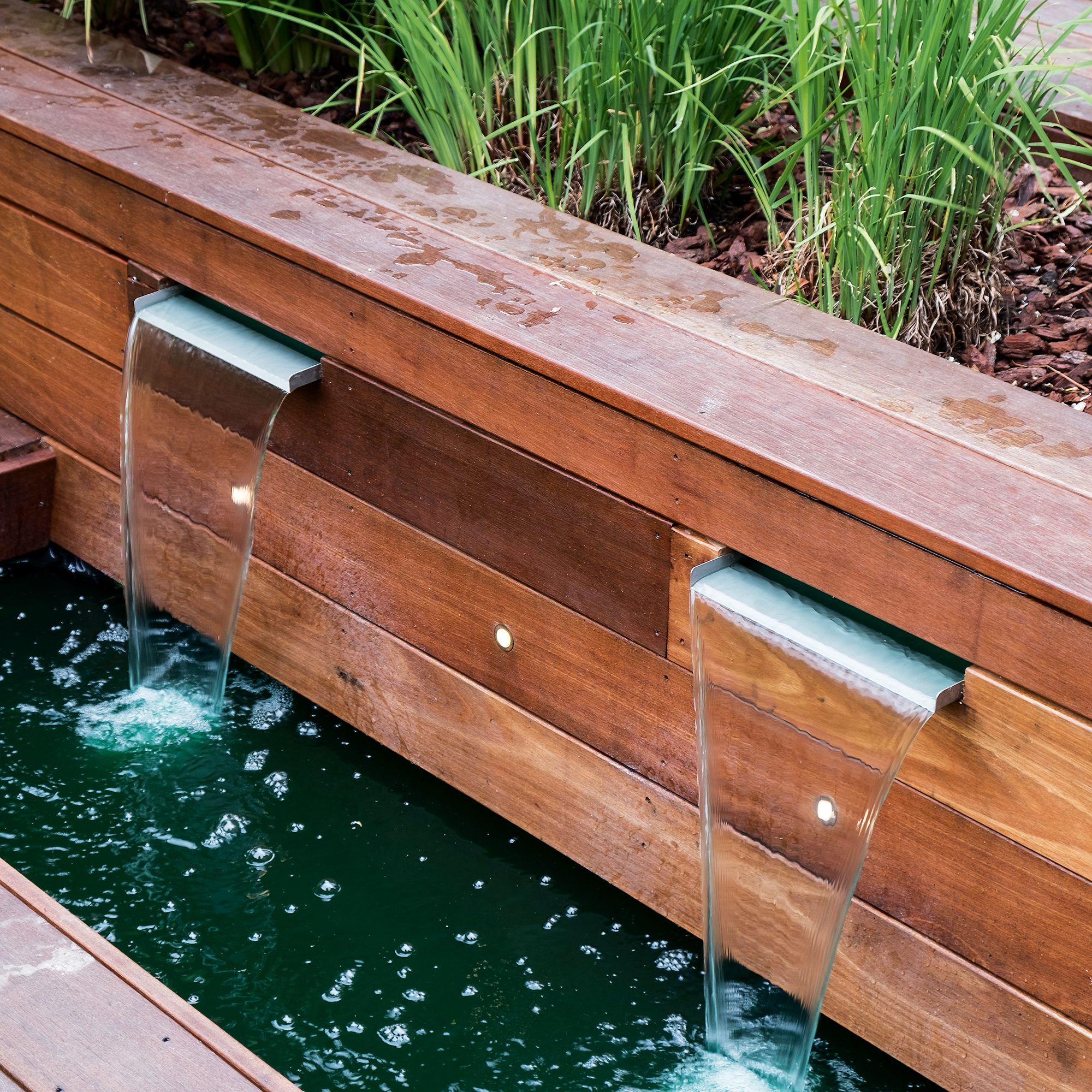
3. Select a base
The next element to consider is how the water is going to be housed. This can range from a complicated structural water feature flowing from an integrated deck for the more experienced DIY enthusiast to a simple rustic terracotta pot installed with a solar pump.
If digging is required it needs to be large enough and deep enough to accommodate and immerse a water pump.
'With the blueprint in hand, preparation of the site is critical. Any debris or roots that could damage liners need removing, followed by precisely marking outlines for trenches or ponds', explains Eric Bramlett, realtor and owner of Bramlett Real Estate.
'Digging is always the messiest part but ensures everything is level and the desired depth is reached. Proper liner selection and installation then comes down to experience - I make sure flexible or rigid materials are properly anchored and protected to last.' Continues Eric.

4. Ensure water circulation
If you want to know how to make your own garden water feature that lasts then it's vital to invest in a water pump.
Most water features work by storing water in the main pool while a pump moves the water (often against gravity) and pushes it out through a hidden pipe back down to the main reservoir.
The constant flow keeps water cleaner for longer and so is more hygienic than a stagnant pool.
'Use a pump to keep the water circulating. This helps prevent stagnation, discourages mosquitoes, and keeps water clear,' says Chris Bonnett.
A water pump is powered by electricity or solar energy. If choosing an electric water pump, consult the expertise of a trained landscape professional as water and electricity are lethal.
5. Introduce aquatic plants
Large water features can be enhanced by introducing water-loving plants such as water lilies, lotus, water hyacinths or Japanese iris. Not only are these plants beautiful, but they will also attract wildlife and naturally filter the water.
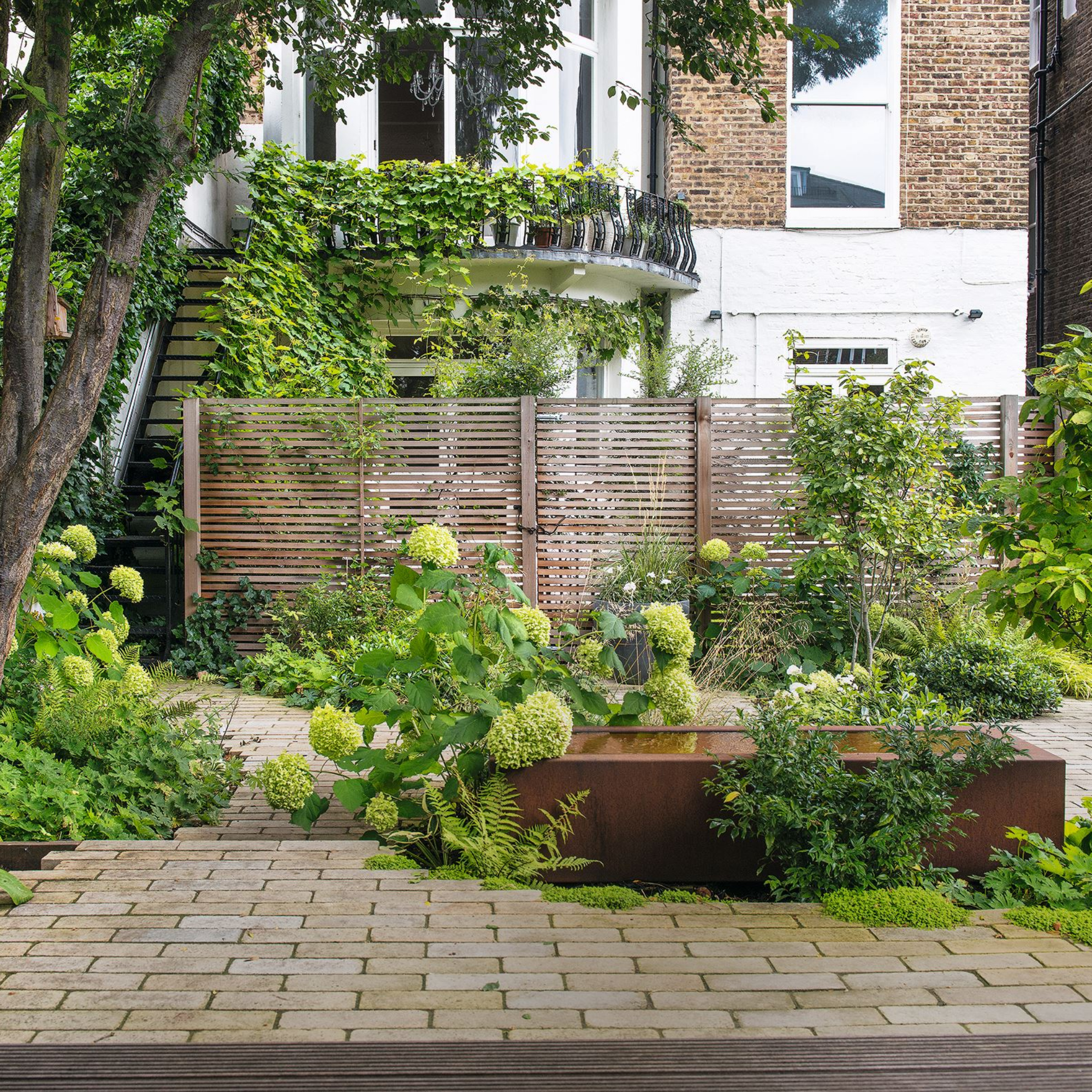
6. Maintain regularly
No matter the size of your new water feature, regular maintenance is key to longevity and a healthy water feature.
'Clean the pump, remove debris and check the water frequently,' says Chris.
7. Install lighting
Outdoor lighting ideas can be an attention-to-detail embellishment to highlight your water feature that creates a mood-enhancing atmosphere during the evening.
Waterproof lights placed in the water will create a shadowy effect and make it visually appealing. Or if you prefer a jazzy effect why not add a bit of colour with the use of LED-coloured bulb lighting?
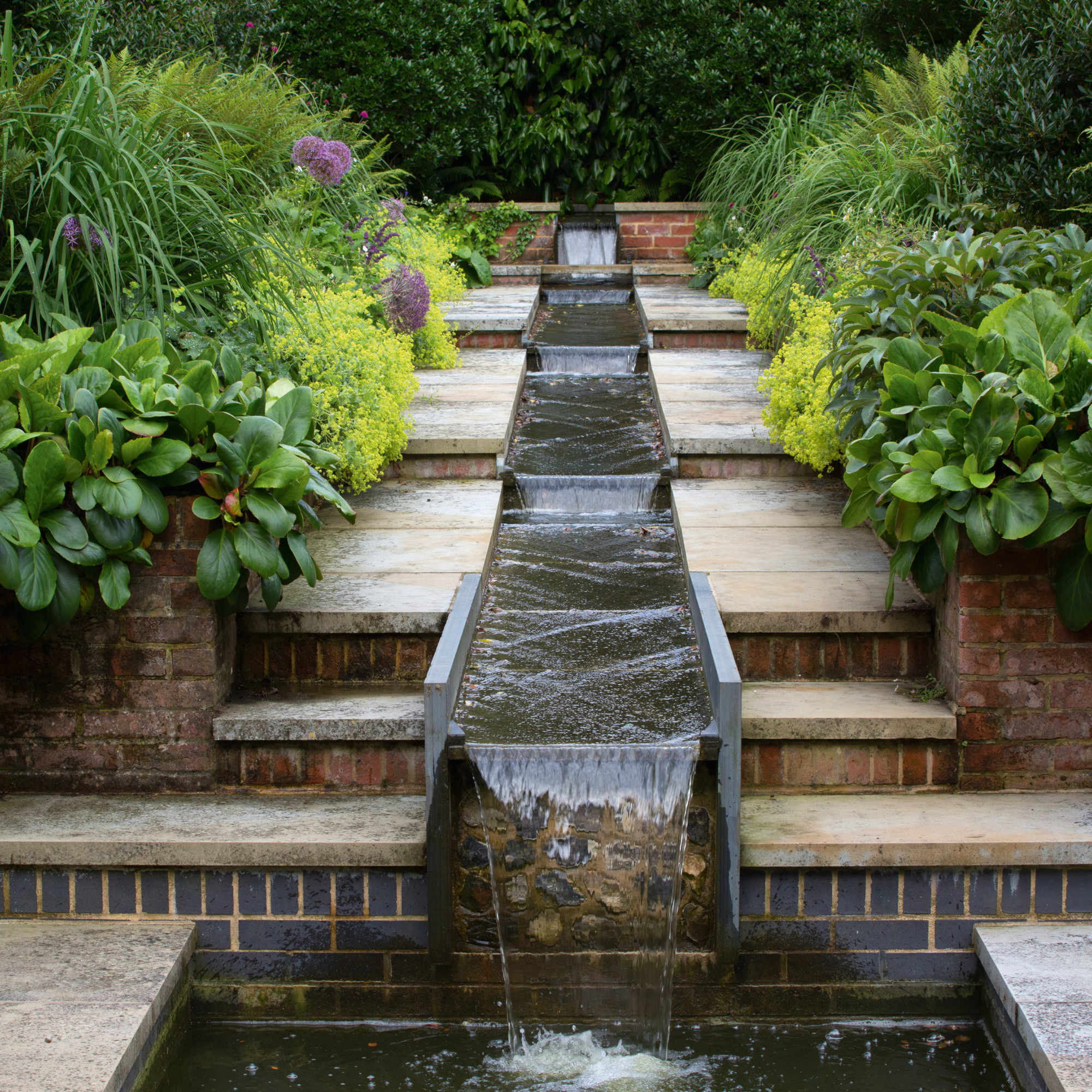
How to create a no-dig water feature
If a large water feature that involves a lot of digging feels overwhelming, there are easier options to ponder that take a lot less effort.
To make your own garden water feature that doesn't require digging, complicated foundations or a large budget, follow the below points.
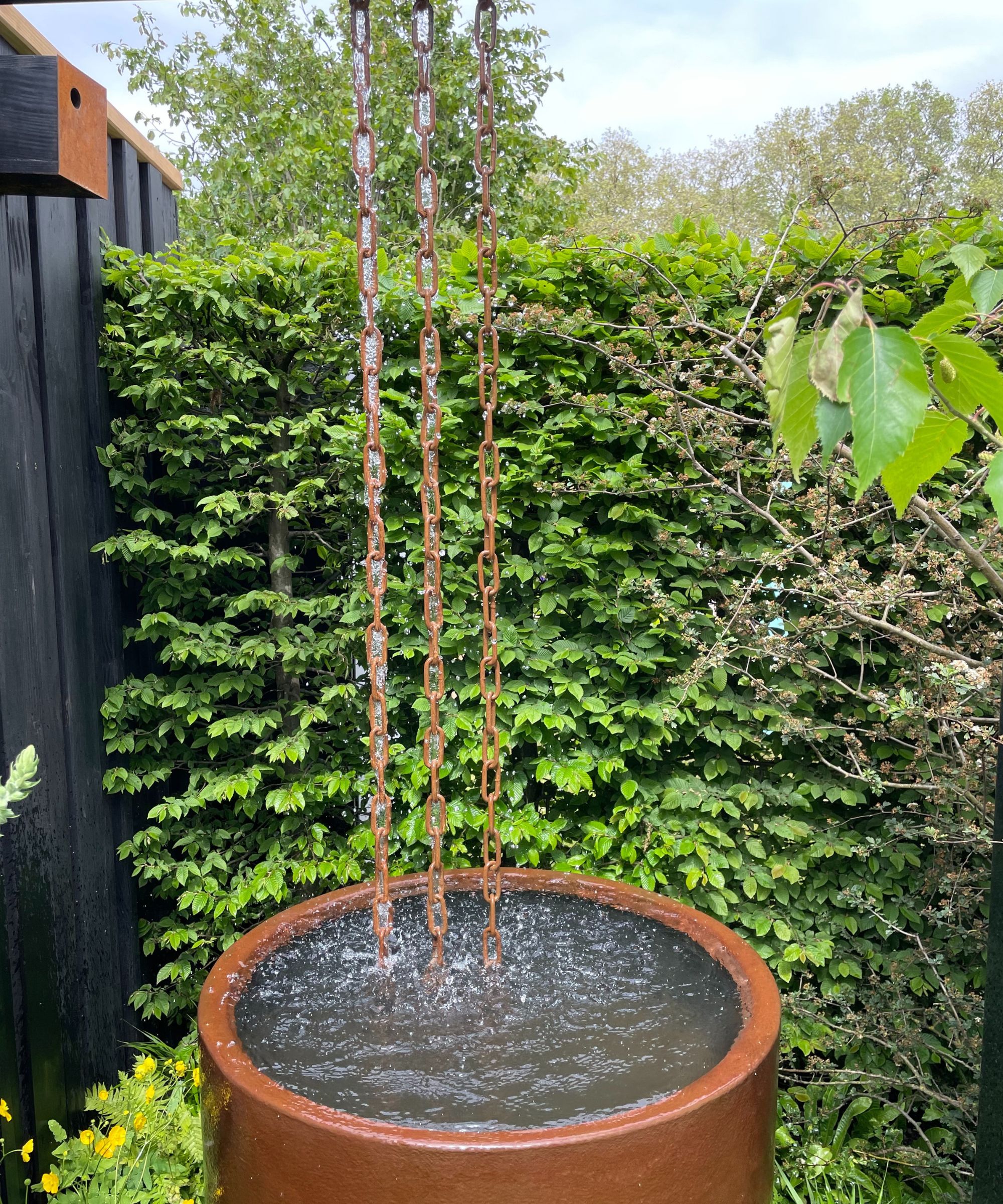
How to make your own garden water feature with an XL planter
- Select a large waterproof container such as a planter or water-tight wooden barrel.
- Fill in any drainage holes and paint the inside with water-proofing paint to seal.
- For decorative effect, add rocks or water-loving plants to the container.
- Pop in a solar-powered fountain and fill it with water.
- Alternatively, using a classic pump create a water spout for water flow with a bamboo flute, old watering can or terracotta flower pot.
- Clean regularly as per larger water features.
FAQs
Can you make your own water feature?
As this article proves it is very possible to learn how to make your own water feature. Whether it's an ambitious project that requires planning and digging or an easy weekend job that uses a simple planter. The heart of any water feature is a water pump that ensures water is kept clean and debris-free.
What types of water features are there?
include stainless steel and glass that suit contemporary gardens. Resin, that can have a realistic resemblance to natural materials such as slate and stone. Finally, for an all-natural water feature choose granite and stone.
Installing a water feature in your garden will introduce the calming and tranquil sound of water. The eye-catching focal point is just one way to add well being garden ideas to your outdoor space.







